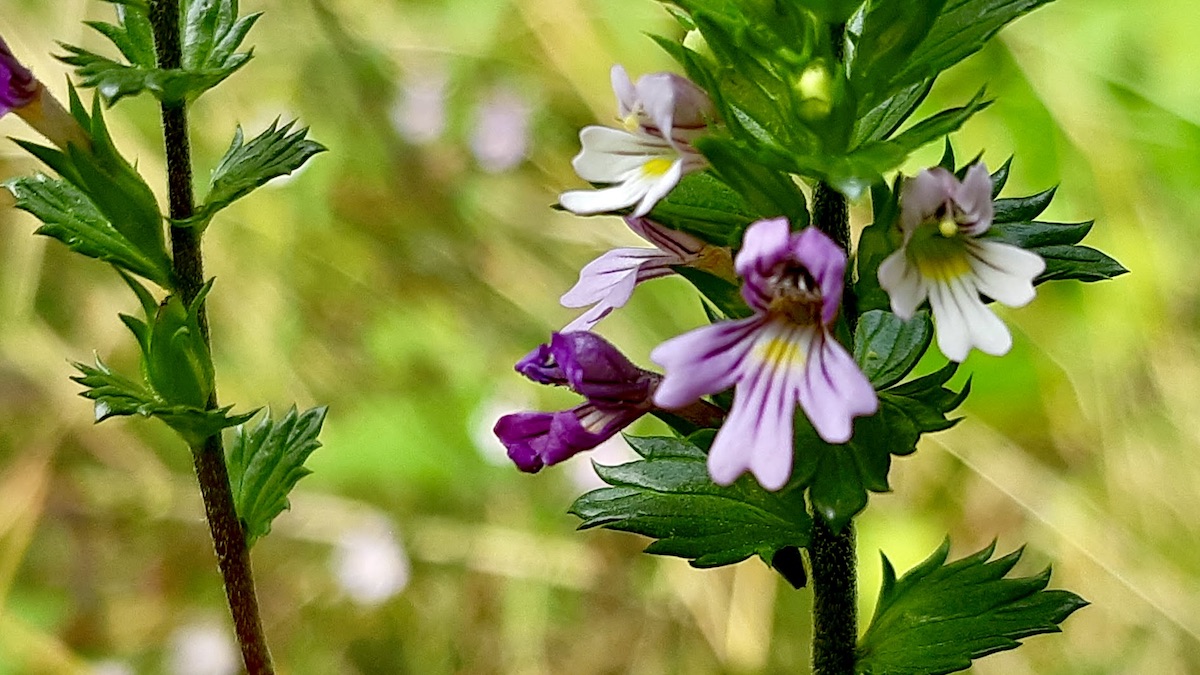
A tiny Eyebright (Euphrasia officinalis) flower, known for its medicinal properties and unique parasitic growth.
Nature’s Little Helper: The Story of Eyebright
Eyebright, scientifically known as Euphrasia officinalis, is more than just a delicate little wildflower; it’s a fascinating plant with a long history and a few surprising secrets. While its small size might make it easy to overlook, this tiny herb has earned a huge reputation for its historical medicinal uses and its unique way of surviving in the wild.
A Name That Says It All
The name Eyebright is a direct nod to its most famous traditional use. For centuries, people have turned to this plant to treat eye ailments. The name Euphrasia is even more poetic, coming from a Greek word meaning “gladness,” which reflects the plant’s reputation for bringing relief and a sense of “wellbeing” to tired, irritated eyes. Historically, an infusion made from the plant was used as a natural eyewash or compress to soothe inflammation and provide relief from eye fatigue.
This association with eye health is so strong that you can still find Eyebright as an ingredient in modern herbal remedies and homeopathic products designed for eye care.
The Little Plant That Borrows
One of the most remarkable things about Eyebright is its survival strategy. It is a hemiparasitic plant, which means it’s only partially parasitic. While it can produce its own food through photosynthesis, it also uses specialized roots to attach to nearby host plants, typically grasses. From these hosts, it steals water and essential minerals. This clever trick allows Eyebright to thrive in tough, nutrient-poor environments where other plants might struggle. It’s the reason you can often find it in meadows, pastures, and along roadsides—it simply taps into the resources of the hardier grasses around it.
Eyebright is also an annual, completing its entire life cycle from seed to flower and back to seed in a single growing season. This quick turnaround, combined with its semi-parasitic nature, makes it a resilient little survivor.
Where to Find It
If you want to spot this botanical marvel in the wild, you’ll have to look closely. Eyebright grows to be only about 10 to 30 cm tall. Its leaves are tiny with small, serrated edges. The flowers are the most distinctive feature: they are typically white or pale violet and marked with a beautiful pattern of fine purple veins and a bright yellow spot on the lower lip. This design not only makes the flower visually stunning but also helps to attract pollinators like bees.
The next time you’re walking through a meadow or a grassy field, take a moment to look down. You might just spot this amazing little plant, a testament to nature’s ingenuity and a reminder of the powerful remedies that can be found in the simplest of forms.





